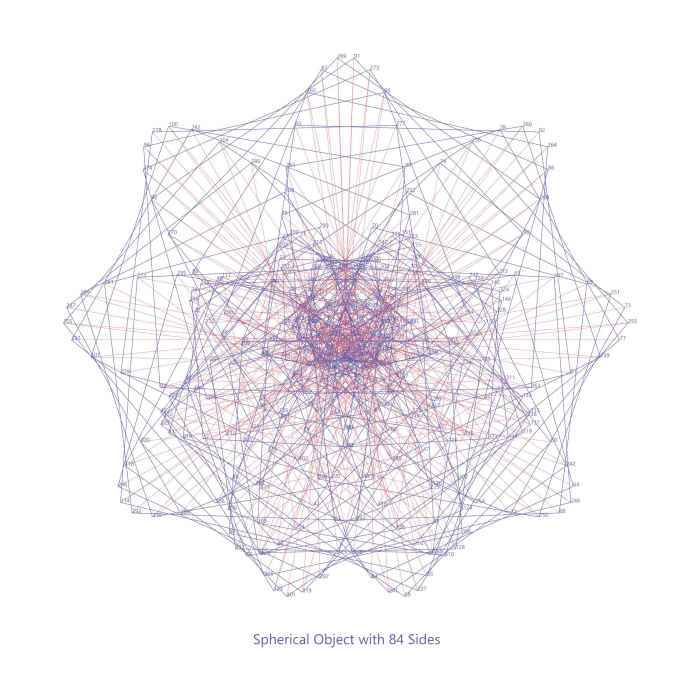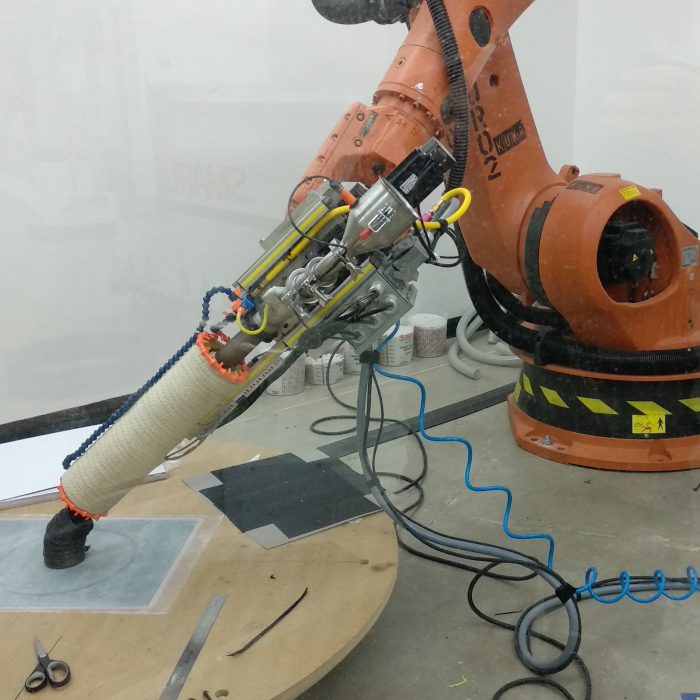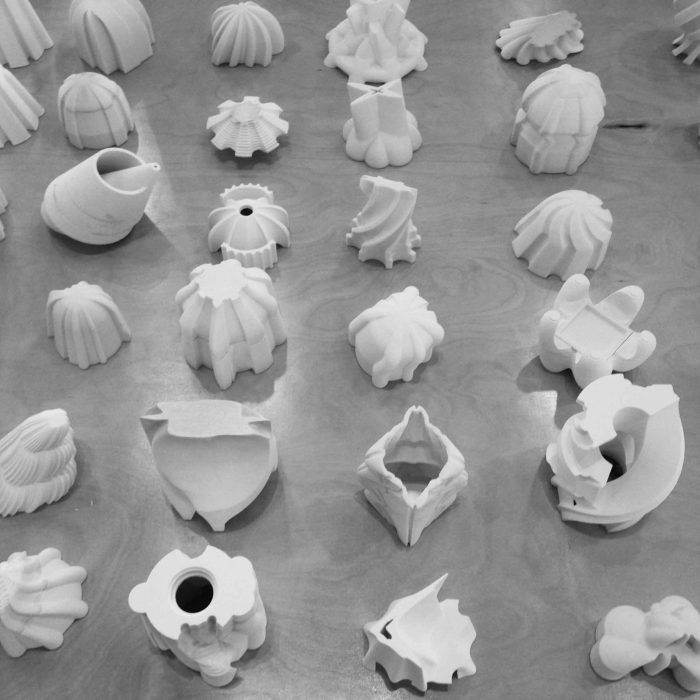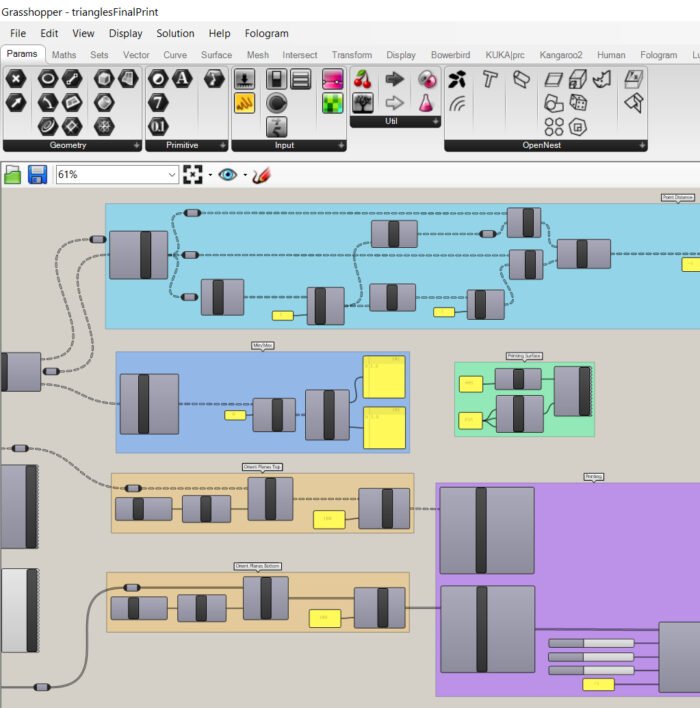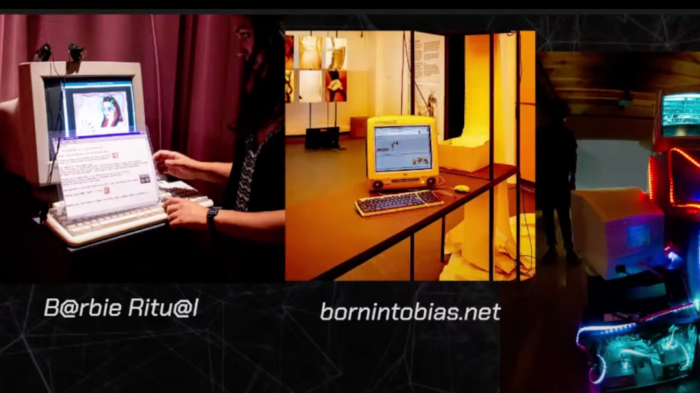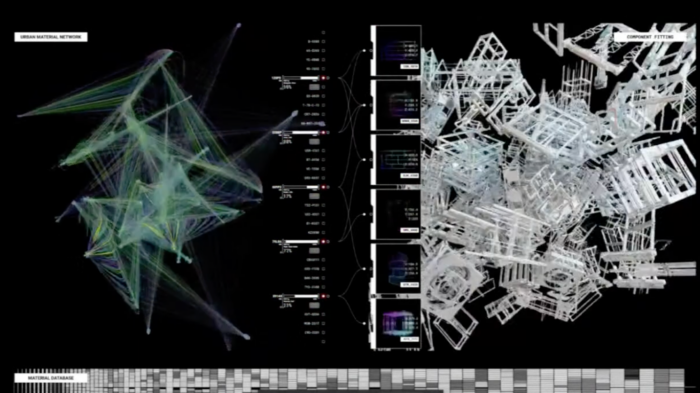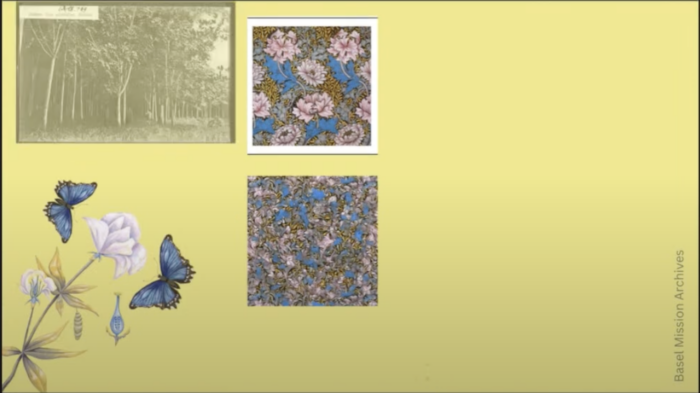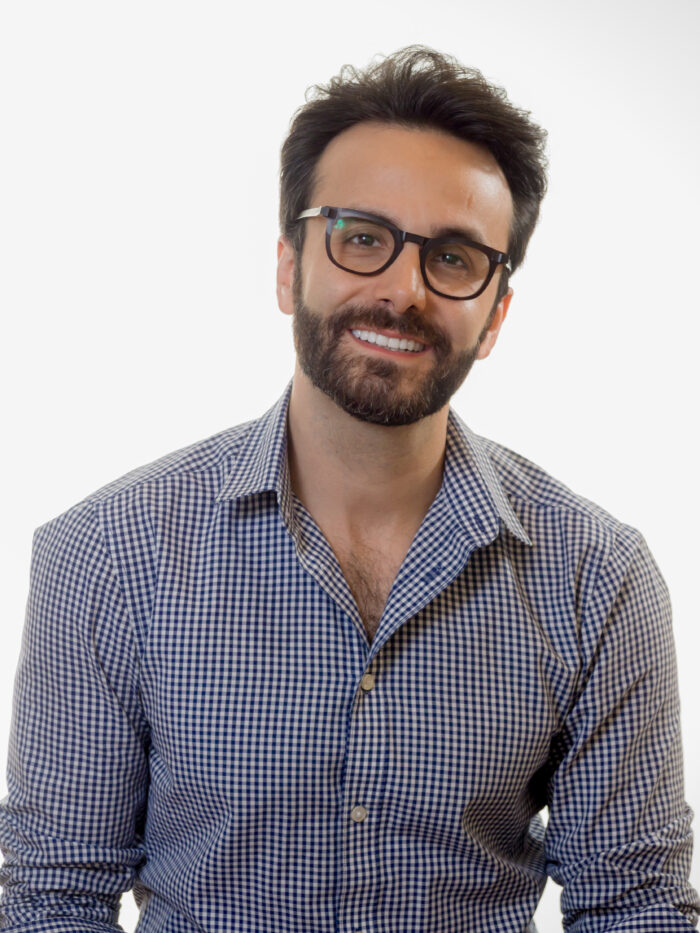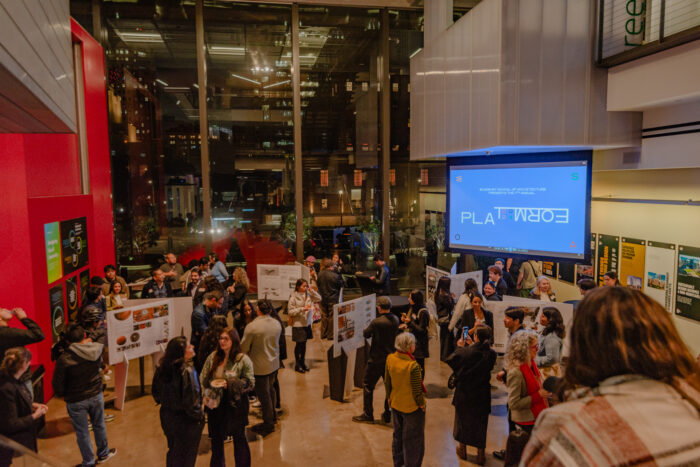School of Architecture
Design Computation
Bachelor of Science [STEM Program]
One of the few undergraduate programs of this nature in the United States, the Bachelor of Science in Design Computation transforms students into technological innovators who affirm the power of computation to enhance design by engaging in interdisciplinary collaboration amongst professional domains of expertise. The graduates of the program create software, interactive environments, and computational tools that reimagine the design process through cyber-physical computing. This STEM degree trains the next level of technological innovators in the built environment.
Design Computation is a STEM program. Learn more about STEM at Woodbury.
 Design Computation was brought to Woodbury University by a $3 Million US Department of Education Title V Grant.
Design Computation was brought to Woodbury University by a $3 Million US Department of Education Title V Grant.
Design Computation Curriculum
The Design Computation curriculum is structured around four main categories of classes: History and Theory, Technology and Making, Design Computation Studios, and Professional Practice. Each one has been designed to work with a specific technology and high-demand programming skills applied to a creative environment.
History and Theory
Learn to describe the work of others in the field of design computation, position their work within it, and consider the broader consequences of the work within culture and society, particularly as it pertains to questions of economic and social equity and environmental issues.
Technology and Making
Learn to create computational strategies using appropriate and up-to-date available technical tools, fabrication methods, and programming languages to address design problems
Design Computation
Learn to compose interactive media, physical prototypes, objects, kinetic systems, building components, and software that respond to a specific design problem.
Professional Practice
Learn to discuss design strategies in a manner that translates complex technical issues into language understandable by multiple audiences including designers, engineers, investors, customers, and the general public.
Courses
Click below to see a draft of our course requirements and curriculum flowchart.
CSMA 100: ACS Lecture Series 1
The Applied Computer Science Lecture Series features practitioners from a wide range of creative and scientific fields, all of whom incorporate technology at the core of their professional inquiry. Open to the entire Woodbury community, this course aims to foster dialogue around the increasing role of technology in society, its application across a diverse range of professional practices, the resulting explosion of creative and expressive modes of production, and the ethical and moral dilemmas that have emerged as technology has evolved. Each week the students will be given four questions to answer after participating in the lecture. This weekly practice will enable them to learn how to engage in a discussion with each lecturer, as well as reflecting on various research methodologies and fields.
CORE 101: Computer Science I
This class provides a foundation in computational literacy, allowing students from a variety of disciplines to read, write and interpret code. The course will inform through assigned readings, lectures, and workshops that programming is not only technical skill but an essential form of literacy. It serves as a standalone course for those seeking to understand the basics of programming. The course structure is based on the “creative coding” model, in which students work with programming languages to produce interactive graphics beginning on the first day of class. Principles such as conditional statements, Boolean operations, loops, functions, and classes will be covered in an applied manner, allowing students to tie syntax and semantics of code to real-time graphics.
GDES 107: Digital Practice
This course is an introduction to the fundamentals of digital technology, including their roles in the creation, reproduction, and distribution of visual messages. Students will study major drawing and imaging software used in the graphic design industry. They will also become familiar with digital tools and terminology as they apply to creative visual communication.
FOUN 102: Design and Composition
This course introduces students to the elements and principles of design and to the processes of design thinking. Formal visual properties of line, shape, form, pattern, value, texture, and sequence are studied in their relationship to content and compositional organizing systems. Studio exercises using various media explore concepts of balance, harmony, repetition, rhythm, scale, and time in two, three, and four-dimensional organizations. Emphasis is placed on developing creative design concepts, gaining practical problem-solving skills, and communicating project solutions visually and verbally. Examples of historical and professional art and design are presented so that students may recognize their influence on contemporary design and to relate their own design efforts to a larger cultural context.
Interdisciplinary Core Elective
Unrestricted Elective
CORE 102: Computer Science II
This course introduces basic principles of algorithmic and object-oriented problem solving, programming language concepts including control structures, data types, classes. It also provides an introduction to Arrays, Inheritance, File I/O, and GUIs. Problem analysis, program design, development and implementation, and related topics are covered. Students complete several programming projects using an appropriate computer language.
CSDC 111: Technology and Making 1
This course will introduce students to the fundamental principles of design with computational tools. The class will ask students to design a computational model in the pursuit of a specific design problem. The potential of computational tools to enable and structure the design process through both iterative and variant based design strategies will be explored. Types of representation such axonometry, orthography, perspective will be examined in both renderings and line-based representations.
WRIT 113: First-Year Academic Writing
This course is taken during the first year and provides the foundations for inquiry-based, research writing. The writing tasks in this course help students build confidence as readers, writers, and critical thinkers by teaching them how to develop, organize, and effectively communicate their own ideas alongside those of others. Students learn to analyze writing and logic, develop and practice the strategies important for effective research writing, and reflect on their own writing and writing processes.
LSCI 105: Information Theory & Practice
This course is an introduction to the production and dissemination of information and knowledge. Using networked information systems, traditional scholarly resources, and evolving delivery systems, students develop an understanding of concepts underlying the research process, as well as skills in retrieval and critical evaluation of resources appropriate to university-level research. Provides experience in the ethical use and presentation of research results with correct documentation styles, and the application of knowledge and skills to research assigned in other courses.
MATH 249: College Algebra
This is a course in algebraic functions. Topics include but are not limited to: relations, functions; inverse functions; the algebra of functions; polynomial, rational exponential, and logarithmic functions. Course content is covered in three realms: symbolic, graphic and the written word. In addition, each topic includes components of problem solving and applications.
Ethics Elective
CSMA 202: Media Programming 1
This course introduces intermediate programming concepts through the construction of interactive experiences for the web by building on programming fundamentals learned in the introductory programming course. Students will learn software design patterns, synchronous and asynchronous programming, unit testing, version control, hosting, data formats and how to work with an API. Students will create interactive works using a variety of backend and frontend technologies. Possible projects include interactive data visualization, networked games, and responsive design.
GDES 207: Digital Media
This is an intermediate course in the study and practice of software applications used for the creation and production of motion-based design. Emphasis is on fundamental animation techniques, developing narratives appropriate for motion graphics and compositing imagery, video, and sound. Students will also gain further experience in the creation and animation of 3D assets.
CORE 201: Data Structures and Algorithms
This course provides a study of algorithms and their related data structures, including linear lists, linked lists, trees, graphs, sorting techniques, and dynamic storage allocation. The algorithms are used to manipulate these structures and their applications. Applications are implemented using an appropriate computer language.
MATH 251: Trigonometry
This is a course in trigonometry with topics including radian measure, algebraic and trigonometric functions, inverse functions, trigonometric identities and equations, vectors, laws of sine and cosine, vector algebra, and projection.
ARTH 206: History of Electronic Art, Media
This seminar ties together major themes and movements in the history of the arts, science, and technology up to the present day, and will explore the influence of electronic media on contemporary artistic practice from the 1960s. Students will examine a wide array of new media, including electronics, robotics, video games, the web, and virtual reality, and will learn to identify major technological and artistic innovations that often drive disruptive societal change. Throughout the semester, students will complete regular writing assignments and presentations, culminating in a research paper.
CSMA 113: Mixed Reality
This class will explore various platforms for the design and creation of AR and VR applications. Emphasizing hands-on experimentation, this experiential studio is meant to be a collaboration between programmers and designers to research and develop new paradigms for user experience and new pipelines for the creation of 3-D content. Using the Unity game engine and various hardware equipment, such as the Microsoft HoloLens, HTC Vive, and mobile devices, students will work individually and in teams to practically apply novel design principles, culminating in a semester project demonstrating a critical approach to designing for these emerging forms of media.
CSMA 213: Artificial Intelligence for Media
This course explores the principles of Artificial Intelligence focusing on the development and deployment of machine learning algorithms. Lectures and reading assignments for the class aim to provide a broad overview of the contemporary research, best practices and applications in the fields of robotics, data analytics, audio analysis, computer vision and other areas. Practical approach to engaging with the subject material will be emphasized through hands-on programming assignments and exercises, including applications of machine learning at the hardware level using sensors and embedding computing platforms. Employing state of the art software frameworks with a creative approach to problem solving, students will understand core concepts involved in machine learning to begin developing expertise with intelligent algorithms, neural networks, training data sets and more.
CSDC 212: Technology and Making 2
This course will introduce students to the fabrication of objects through the use of computational tools. The class will ask students to develop a computational model that generates a series of fabrication-ready digital files. Issues of material tolerance, nesting, connections, and hybrid modes of fabrication will be explored in the model. In addition to the digital portion of the class, a hands-on approach to digital fabrication will require students to use a variety of digital and conventional tools within Woodbury University’s making complex.
MATH 252: Discrete Mathematics
An introduction to the mathematics of computer science. Logic and Boolean algebra, discrete logic circuits (apps of and/or/nor), number systems, proofs, set theory, matrix theory, counting methods, discrete probability, sequences, induction, recursion, counting, and graph theory (including trees).
CSMA 112: Interactive Prototyping
A hands-on introduction to the design and creation of interactive prototypes that form the basis of intelligent objects and spaces in the sphere of media, art and design, architecture, wearable technology, and IoT (Internet of Things). In the course of the semester, students will acquire practical electronics and embedded programming skills by experimenting with technologies such as microprocessors, sensors, actuators, and LED lights, using them in conjunction with the software tools, source code libraries, and network services facilitating their applications. Class sessions will focus on the design and construction of electronic circuits used to explore real-time interaction. Students will complete regular programming assignments, culminating in a collaborative installation project that integrates the hardware and software technologies, concepts, and programming techniques covered in the course.
CSDC 250: Programing Portfolio
This course will provide students with principles and tools for the design of a professional portfolio. Students will use online resources to generate a web-based portfolio that contains evidence of computational proficiency and design proficiency through the display of objects, images, time-based media, and student-built interfaces. The portfolio itself will be considered an object of design and principle of use interface and experience will be discussed and implemented.
CSDC 313: Technology and Making 3
This course will introduce students to contemporary topics in the processing and analysis of data in design computation. Topics may include sensing, collecting, processing, and analyzing data in regard to the city, the environment, and society. Students will be introduced to sensing live data with hardware and software as well as graphic techniques for communicating outcomes. The critical examination of computational bias will be an essential component of the inquiry, as students collect, analyze, and communicate the outcomes of their research.
CSDC 320: Design Computation Studio 1
This course is the first studio in the design sequence. It allows students to apply their practical and theoretical knowledge to the design of a single object, assembly, or system according to parametric principles. Students will be asked to articulate their intention, to sketch a workflow, and to document their process. By the end, students will have learned some of the fundamental organizational principles of architectural design, how to apply custom scripts to a parametric model and describe the results through drawings, fabricated model or prototype, and a written specification, and understand the importance of collaborative workflows.
WRIT 313: Advanced Academic Writing
This course builds upon the foundations of WRIT 113 by helping students transfer those writing strategies to new situations, purposes, and audiences for both upper-division academic writing and professional contexts. Through the lens of a course topic, writing in this course aims to make transdisciplinary connections that benefit all students regardless of major, but encourages students to engage with issues within their major and future profession.
ENVT 220: Environmental Studies
This course provides an overview of topics including ecosystems, biodiversity, mineral and nutrient cycles, sources of energy, waste and pollution, and environmental movements and philosophies.
CSDC 301: History and Theory
This course will provide students with a broad historical context for contemporary computational design. Focusing on the relationship between technical systems, social systems, and aesthetic experimentation, it starts by examining design’s relationship to engineering and social sciences in the nineteenth and early twentieth centuries and ends with the introduction of computation to aesthetic production during the late 1950s through the 1980s. This course will help students ground their work in design studios and technical seminars in a historically-informed understanding of their chosen field of study. Instruction will be provided through short lectures and seminar discussions based on assigned readings from key texts that shaped the field. Assignments will include short-form writing and a term paper. Since text and writing play an important role in the development of computational aesthetics, students will be introduced to computational writing techniques as a way of generating ideas.
CSDC 314: Technology and Making 4
This course will offer a focused study of robotics. Students will learn the general principals of robotic interface, setup, tooling, and programming. At the core of the class will be the design and production of an object enabled by the use of robotics.
CSDC 330: Design Computation Studio 2
This course builds on CSDC 320 by applying the processes learned there to a more complex design problem. Where the previous studio investigated the design of a simple object or assembly, this studio explores the challenge of designing a kinetic/dynamic system at the scale of a physical environment. Students will learn principles of interaction, responsiveness, and kinetic design, using progressively more sophisticated computational tools and scripting.
CORE 301: Applied Artificial Intelligence
This course provides an introduction to the basic principles, techniques, and applications of Artificial Intelligence. Some of the specific topics include knowledge representation, logic, inference, problemsolving, search algorithms, game theory, perception, learning, planning, and agent design. Students will experience programming in AI language tools. Potential areas of further exploration include expert systems, neural networks, fuzzy logic, robotics, natural language processing, and computer vision.
UD Interdisciplinary Elective
Natural Science with Lab Elective
Work Experience
CSDC 440: Design Computation Studio 3
This is the first course in a two-course sequence that is the capstone of Design Computation program. During this semester, students will engage in instructor directed research on a specific topic in design computation. As a capstone studio it is expected that the work of the semester will use the instrumental aspects of design computation to engage social, political or environmental issues related to design and/or the built environment. The culmination of the semester will be a proposal for a design project to be completed during the spring semester.
MDST 120: Public Speaking
This course provides a study of the oral presentation of ideas and feelings that blends contemporary communication theory with traditional approaches to public address. This course also provides experience in public speaking, interpersonal communication, and critical listening.
CSDC 415: Technology and Making 5
This course will introduce students to Building Information Modeling (BIM), the architecture and engineering industry standard for design documentation. Students will learn to build, manage, and troubleshoot BIM models. In addition, students will learn to use both visual scripting and text-based scripting interfaces to control and generate BIM models.
General Education Elective
Social Science Elective
CSDC 450: Design Computation Studio 4
This is the second course in the capstone studio sequence in which students develop the design proposal from the fall semester. As a capstone studio the final project should move use the techniques, theories, and instrumental knowledge acquired in the program to produce an object, interface, or environment that engages a contemporary social, political, or environment issue.
CSDC 480: Professional Practice
This course introduces students to the principles and practices that are central to contemporary ways of working in a professional setting. It asks how we work with digital tools. The course examines the reciprocity between changes in technology and changes in working methods. Working in groups on real-world problems, students will learn about a range of practices, from Extreme Programming and Lean Manufacturing to contemporary agile methods such as Scrum. The course ends with a survey of workflows central to contemporary design practice, from conception to fabrication. Throughout, students will be asked to consider questions of equity in the workplace and how our working methods reinforce and challenge social and cognitive biases.
UD General Education Elective
Unrestricted Elective
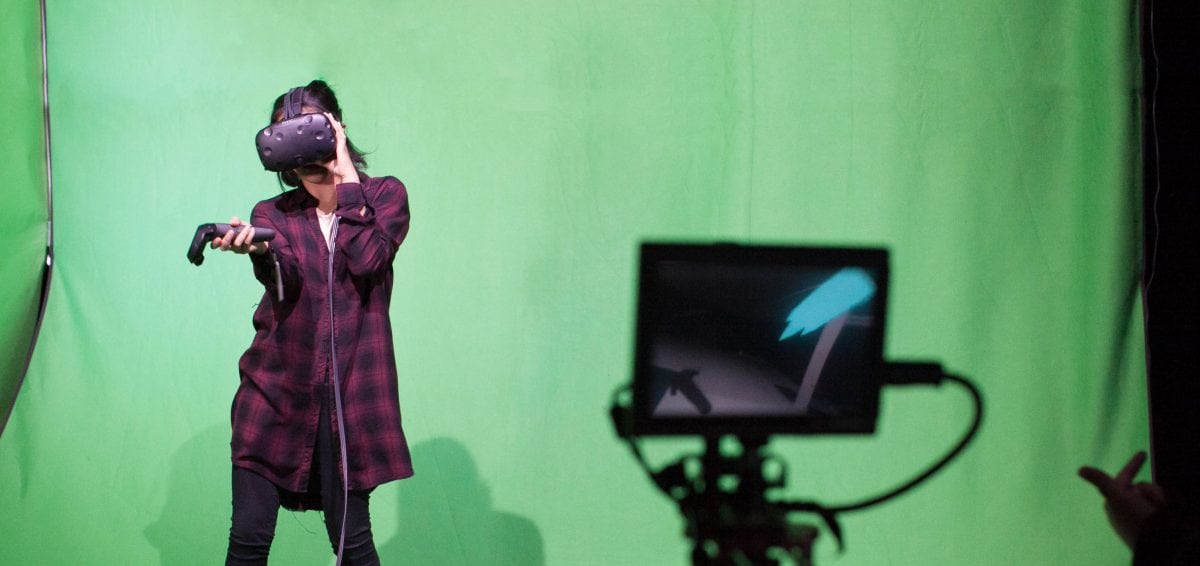
Career Opportunities
The Design Computation degree opens a wide range of potential careers. Some of the more common paths include:
- Computational Designer
- Computational Design Architect
- Design Computing Specialist
- Design Analyst
- Design Technology Manager
- Software Solutions Developer
- Smart Cities Consultant
- Urban Data Analyst
- Digital Fabrication & Smart Manufacturing Specialist
Applied Computer Science Lecture Series
The Applied CS Lecture Series features practitioners from a wide range of creative and scientific fields, all of whom incorporate computational design and applied computer science and technology at the core of their professional inquiry.
Faculty
Our faculty are artists, designers, computer scientists, and policy makers practicing in Los Angeles, San Diego, and Tijuana. This internationally recognized and award-winning group works closely with students to teach the skills required to push the limits of practice.
A Message from the Chair
Dr. Arash Soleimani
Associate Professor & Chair, Design Computation & Applied CS – Media Arts
We imagine a future of inclusive educational environments in which students, faculty, and community members collaborate through mindful explorations, technological innovations, iterative experimentations, and critical analysis.
Our Design Computation and Applied CS – Media Arts programs combine innovative design thinking and insightful research to understand how emerging technologies and the cyber-physical environments where people live, work, and play impact our daily lives. Our graduates are changing the world in the art, design, and technology industries by engaging in interdisciplinary collaboration among professional domains of expertise.
Ready to learn more?
Feel free to reach out to me to talk about the program! Email me at [email protected].
STEM Designation
The Design Computation program has been designated as a STEM degree. All international students who receive Design Computation degree can now apply for a 24-month extension of their post-completion OPT (Optional Practice Training), and they can work in the USA for 36 months or three years.
Accreditation
Woodbury University is accredited by WSCUC: Senior College and University Commission.
